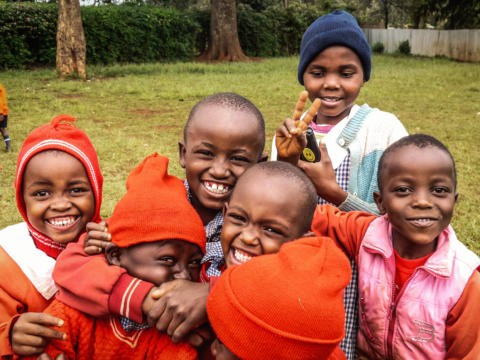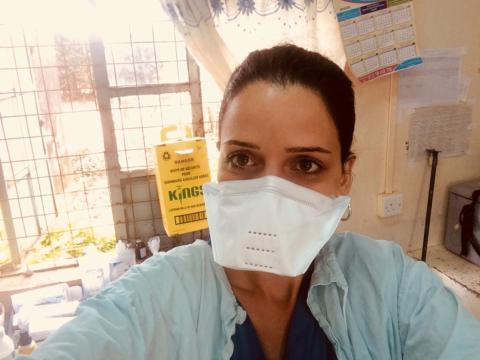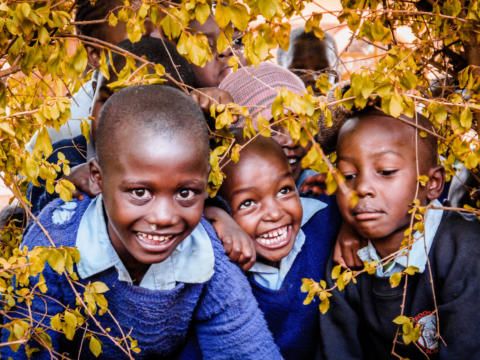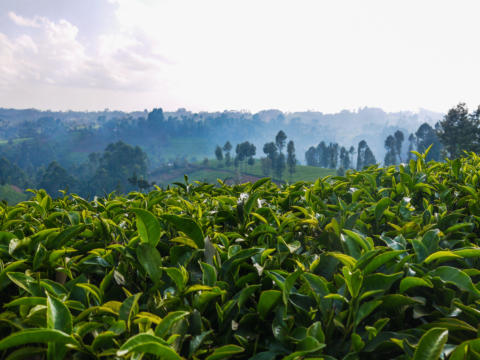Only 420€ per week!
Focus on Environment and Climate Change
Nakuru - Kenya
Assist the local community with their efforts to proactively address challenges related to preserving the natural environment for fauna, flora and people!
Join a local initiative with reforestation efforts to share your energy to get the word out in the community about the positive change that is possible and much needed to ensure a better tomorrow. Climate change will affect everyone globally, so the efforts put in here advance the cause for now and the future.
Program Description
Even though most of us have been passive in the past, what we have come to know is that now is the time to take action. We must take care and treat the health of our natural environment like the gift that it is. We must maintain it properly, so that it will continue to be a benefit for generations to come.
This program relies on our partnerships with community members who are taking ownership of their land and their future. Their local initiative focuses on Restoration, Transformation, Sustainability and Preservation of the environment to combat the current practices which have caused climate change in the form of global warming.
These efforts matter most because they are community owned and community driven with the purpose of environmental restoration, transocial economic benefits and environmental sustainability.
- To take a holistic approach to climate adaptation strategies for the residents
- To restore forest vegetation in settlements and farmlands lost in the last 45 years due to wanton and unchecked tree exploitation of trees for use as timber, charcoal and firewood.
- To recreate the Forest like ecosystem and reclaim lost benefits that come with ecologically friendly environment.
Activities may include:
- Preparing of tree seedlings and learning how to maintain a tree nursery
- Actual tree planting (will involve the digging of the holes where the seedlings will be planted)
- Community education on the importance of reforestation
- Creating a green wall where we reuse plastics to decorate walls and also have vertical vegetable gardens in various institutions
Aims & Objectives
- Assist with environmental conservation and sustainability efforts
- Gain invaluable knowledge about the ecological challenges faced in the region
- Assist the local community efforts to educate the community youth about the initiative and the related environmental matters to encourage their consistent and proactive participation
Schedule
Monday to Friday
You will spend 4-6 hours daily assisting with the goals of the local initiative’s goals. The day could look like:
- Breakfast
- Reforestation efforts
- Lunch
- Climate Change research and education
- Dinner
Note: This schedule can be changed and/or amended depending on weather conditions, local conditions and unforeseen circumstances.
Participant Criteria & Requirements
Standard Requirements
Minimum age: –
Maximum age: –
Minimum English level: Intermediate
CRB required: On Signup
Passport copy required: No
Resume copy required: No
Required qualification: None
Additional Requirements
There are no further requirements.
Additional Equipment
- Work attire such as: rubber boots, gloves, sun hat, long sleeve shirts and long pants.
- Modest or business casual attire is required while on the school site and when interacting in the village. It must be totally covering the knees and shoulders, (nothing tight fitting, sheer, low cut, or with any offensive/questionable language written).
Location
Nakuru town located in west-central Kenya lies on the north shore of Lake Nakuru and is home to approximately 500,000 inhabitants making it one of the largest urban centers in Kenya. Once a center for European activity, this region is now associated with a flourishing manufacturing industry, busy commercial shopping centers and important agricultural initiatives.
About the Accommodation
You will be accommodated in our center. All participants are expected to be environmentally aware and use all resources with restraint, especially electricity. Sometimes there are power cuts during the day, but do not panic. This is life in the village. There is an available water supply. You will have all of the necessities while here.
You will have meals provided and rooms cleaned on the weekends, but you will also be expected to clean up after yourself and play your part in keeping the accommodation neat and organized. The location is very close to the green steds international school and is a few minutes walk to the Lake Nakuru National park Southern gate. It is around 15KM from Nakuru town.
Food Arrangements
Food served will mainly be Kenyan food, which consists of vegetables, potato, eggs, bread, pancakes (commonly known as “chapati”) and fruits such as oranges, bananas and avocados.
Facilities
There are available supermarkets about 5km away,there are shops within walking distance, and ATMs are available in Nakuru town. We have local markets for fruits and fish in the free area. Here, we use public means of transport.
Activities & Events
No scheduled activities outside the program.
Sights & Surroundings
There are many places for you to visit during your free time. For example, you can visit the Thompson Falls in Nyahururu, go hiking in Hyrax hills, go hiking at Menengai crater, go and see the Equator at Gwakung'u ,visit Lake Nakuru National Park and Lake Naivasha.
Transportation
From this location we do not provide free transport to other locations.
Quick Facts
Name: Republic of Kenya
Population: 45 million
Capital: Nairobi
Language: English, Swahili
Currency: Kenyan Shilling (KES)
Time zone: UTC +3
Country Information
The first thing that might pop to mind when thinking of Kenya are lions, zebras and leopards. However, this vast country has much more to offer. With 40 national parks and reserves scattered around the country, Kenya features almost every landscape and activity that you can imagine and it will suit any type of traveller’s palette.
Undeniably, safaris are the core of tourism in Kenya, but you might also venture in deeper and discover the Maasai, a semi-nomadic tribe known for its color-filled adornments. Nairobi is another destination to explore, with its bustling nightlife and unique vibes. For those who love nature, a visit to the Great Rift Valley is a must. And for those who enjoy chilling at the beach, Kenya’s coastal area covers almost 80,000 square kilometers and remains sun-filled during most of the year!
Climate
Kenya is a big country and its climate varies from tropical along its coast to arid in the north and quite temperate inland. Kenya receives a large amount of sunshine year-round but generally, the hottest period is considered take place in February and March while the coldest one between July and mid August. The “long rains” season happens between March and June, while the “short rain” season is between October and December.
Culture
Over the course of history, Kenya has been the hub of migration and henceforth, the country has become one of the most diverse culture and language-wise.
The country has over forty different ethnic groups, including Luo, Kamba, Maasai and more. Each speaks a variety of mother tongues, although Swahili remains the most widely spoken language. Moreover, European, Arab, Indian and Pakistani groups who came to the country in the 19th century can be added to the mix of diversity.
Even though religions such as Christianity and Islam are widely spread, many still believe in the ancestor world, where the dead have an impact on the lives of the living.
Today, Kenya’s culture, including forms of dress, music and food sees its strong influences from other parts of Africa, India, Europe and the United States. However, in certain parts of the country, many communities retain their traditional lifestyle and culture and people still wear clothes, skins, jewelry as they did centuries ago. Many remote tribes remain absolutely isolated and indigenous as
Gastronomy
Traditional Kenyan food are known for consisting corn, potatoes and beans. A staple dish is Ugali, a porridge made out of maize. Another typical delicacy is irio, a blend of corn, beans, potatoes and beans dipped into meat or vegetable stews.
Transportation
Plane
Kenya Airways offers daily flights between Mombasa, Malindi, Lamu, Kisumu and Nairobi. Likewise, another popular choice is Air Kenya, which flies regularly between Nairobi, Mombasa, Malindi, Lamu, Amboseli, Maasai Mara, Meru, Nanyuki and Samburu.
Bus
Kenya has a large bus network between many destinations, but be advised that roads are bumpy. For safety reasons, we highly advise to use long distance buses only during daytime.
Minivan
Minivans, known as “matatus” in Kenya are another way to get around for short and medium distance travels. Taking a matatu is a must to experience the real Kenya as they are often decorated in colorful and fascinating colours. You can hail a matatu on the side of the road and in this day and age, the network is easier to figure out than ever as routes and schedules are provided on Google Maps.
Train
The train in Kenya is often dubbed the “Lunatic Express”. It travels between Nairobi and Mombasa three times a week. It is undeniably a great experience to travel by train but if time is an issue, we advise you to go for another method of transportation as the train has a bad reputation for being extremely slow and often delayed.





